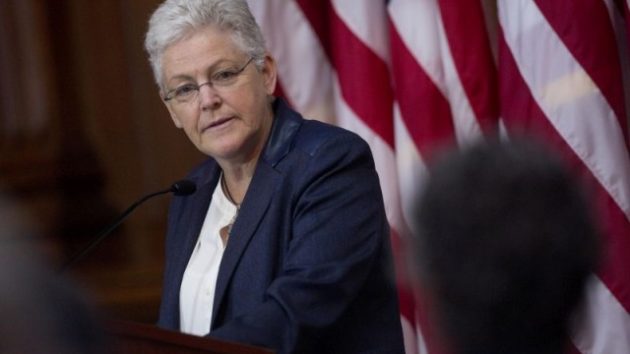What EPA Did to Sell Its Water Rule Might Have Skirted the Law
In March, EPA Administrator Gina McCarthy bragged to a Senate Committee about the outpouring of public support for its proposed water regulations:
We have received over 1 million comments and 87.1 percent of those comments we have counted so far… are supportive of this rule.
No wonder EPA received so many public comments on its draft Waters of the United States (WOTUS) regulation; it helped drum them up, the New York Times reports:
In a campaign that tests the limits of federal lobbying law, the agency orchestrated a drive to counter political opposition from Republicans and enlist public support in concert with liberal environmental groups and a grass-roots organization aligned with President Obama.
The Obama administration is the first to give the E.P.A. a mandate to create broad public outreach campaigns, using the tactics of elections, in support of federal environmental regulations before they are final.
EPA fired up its propaganda machine to defend WOTUS after a host of critics–farmers, ranchers, home builders, thegolf industry, and other businesses pointed out how the rule will empower federal bureaucrats to regulate “wetlands, intermittent streams, ephemeral steams (those that only flow after a rainfall or snowmelt) , and man-made bodies of water like ditches, ponds, and canals.” They worry that WOTUS will federalize local land use decisions, and make it even harder to build things in America.
The Times describes one of EPA’s tactics:
The most contentious part of the E.P.A.’s campaign was deploying Thunderclap, a social media tool that spread the agency’s message to hundreds of thousands of people — a “virtual flash mob,” in the words of Travis Loop, the head of communications for E.P.A.’s water division.
EPA’s Thunderclap campaign said, “Clean water is important to me. I support EPA’s efforts to protect it for my health, my family, and my community,” and included a link to an EPA webpage (now unavailable) that directed the public to submit comments on the draft regulation. The effort reached 1.8 million people.

Whether what EPA did violated the Anti-Lobbying Act’s ban on agencies lobbying Congress, it certainly skirted the spirit of the law. The Times writes:
Federal law permits the president and political appointees, like the E.P.A. administrator, to promote government policy, or to support or oppose pending legislation.
But the Justice Department, in a series of legal opinions going back nearly three decades, has told federal agencies that they should not engage in substantial “grass-roots” lobbying, defined as “communications by executive officials directed to members of the public at large, or particular segments of the general public, intended to persuade them in turn to communicate with their elected representatives on some issue of concern to the executive.”
…
At minimum, the actions of the agency are highly unusual. “The agency is supposed to be more of an honest broker, not a partisan advocate in this process,” said Jeffrey W. Lubbers, a professor of practice in administrative law at the American University Washington College of Law and the author of the book “A Guide to Federal Agency Rulemaking.”
“I have not seen before from a federal agency this stark of an effort to generate endorsements of a proposal during the open comment period,” he said.
It appears the Thunderclap campaign violated the spirit of internal EPA policy. A 2010 memo on indirect lobbyingfrom EPA’s general counsel states:
EPA employees may not explicitly or implicitly encourage the public to contact Congress in support of, or opposition to, a legislative proposal, nor explicitly encourage the public to contact state or local governments for that purpose.
EPA didn’t use the campaign to encourage the public to contact Congress. It instead asked the public to leave comments in support of WOTUS, which EPA Administrator McCarthy then referenced in testimony before Congress to claim overwhelming public support for the controversial rule.
EPA defends its actions. The Times quotes EPA’s Director of Communications for Water Travis Loop: “We are just borrowing new methods that have proven themselves as being effective.” In a blog post, Liz Purchia, Deputy Associate Administrator for EPA’s Office of Public Affairs, writes, “A public outreach effort to increase awareness and support of EPA’s proposed Clean Water Rule is well within the appropriate bounds of the agency’s mission to educate and engage Americans.”
It’s bad enough that EPA is engaging in such unprecedented regulatory overreach by crafting WOTUS, but its aggressive advocacy–perhaps too aggressive–shows that it’s an agency that’s out of control on multiple levels.
CORRECTION: An previous version of this post stated that EPA staffer Travis Loop was a “former campaign operative for President Obama’s Presidential campaign.” That’s incorrect. It has been corrected, and I apologize for the error.
Sean Hackbarth @seanhackbarth Follow @uschamber
EDITORS NOTE: The featured image is of EPA Administrator Gina McCarthy. Photo credit: Andrew Harrer/Bloomberg.


